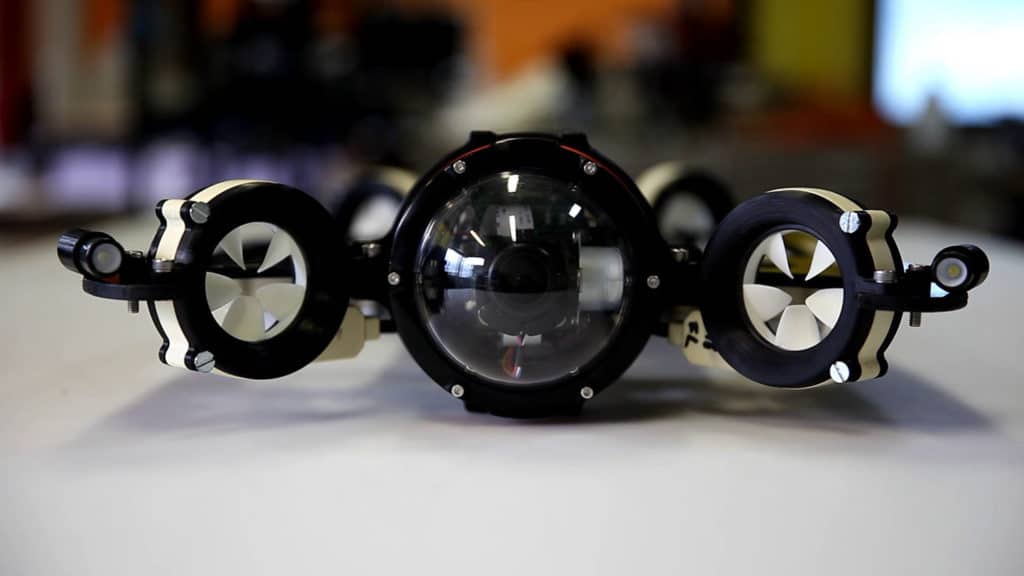Today, there are many civilian drones that are used for aerial photography, search and rescue operations, and surveillance. There are also underwater drones, but they still remain tethered to the surface via communications cables in order to transmit control signals and video recordings, as radio waves propagate poorly underwater. This limits the range of the robot and can also cause the cable to snag on another underwater object.
Now, a Swiss startup Hydromea has unveiled the prototype of the world’s first wireless underwater drone in a pool demo. Called ExRay, the underwater drone can fit into a backpack, be remotely controlled, and send HD video back in real-time without any physical connection to the pilot.
It utilizes the company’s Luma underwater communication system instead of a tether that transmits data through the water using rapid pulses of light.

The robot has a flat body with a sealed transparent capsule in the middle. It houses the tilted camera, optical transceiver, battery, and the rest of the electronics. The Hydromea ExRay is 70 cm long and equipped with seven hubless thrusters, four vertical, three horizontal, giving it six degrees of freedom maneuverability. In addition to a camera with a zoom lens, two LED headlights are installed.
Luma sends pulses of 470-nanometer blue LED light back and forth between two optical modems, one on the ROV and one at the surface. The developers note that the transceiver can transmit a signal at a speed of up to 10 megabits per second. This allows you to broadcast video in HD resolution from the robot to the operator’s console in real-time.

However, ExRay currently has some limitations. The ROV currently has a communications range of 50 meters, both in clear water and complete darkness. The team plans to bring ExRay to a depth of at least 100 meters. The underwater drone is intended to be used primarily in closed, artificial spaces underwater.
On a single battery charge, it works from six to eight hours. The drone will deliver significant benefits in a number of inspection scenarios in confined flooded spaces, such as hydropower dams, closed waterways, and ballast tanks on ships, reducing the cost and time-to-results, eliminating safety risks of dangerous inspections performed by humans today.
While the price and date of the start of sales of the device are unknown, but the company plans to launch it into mass production next year.
